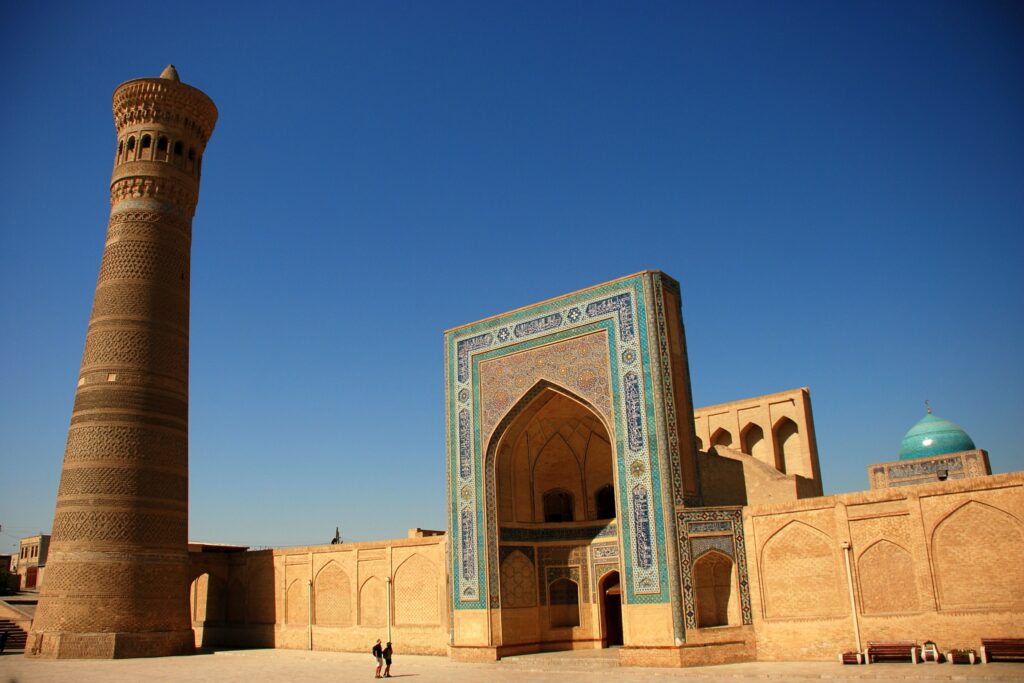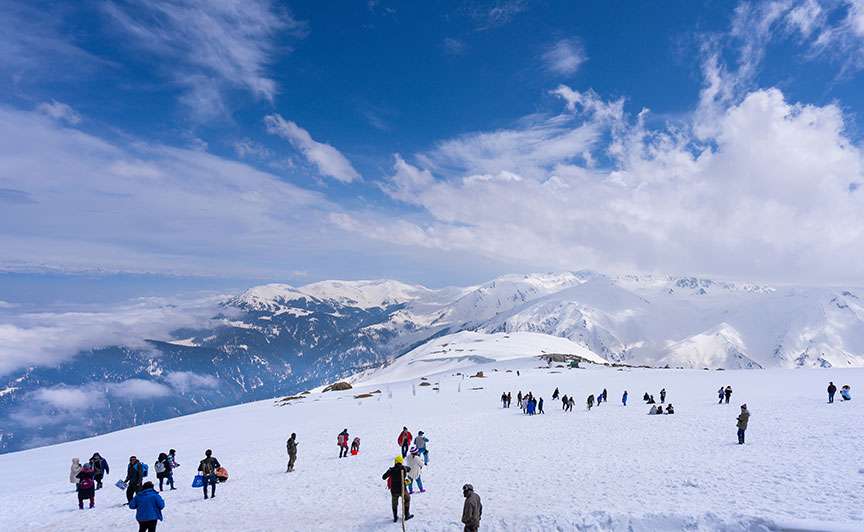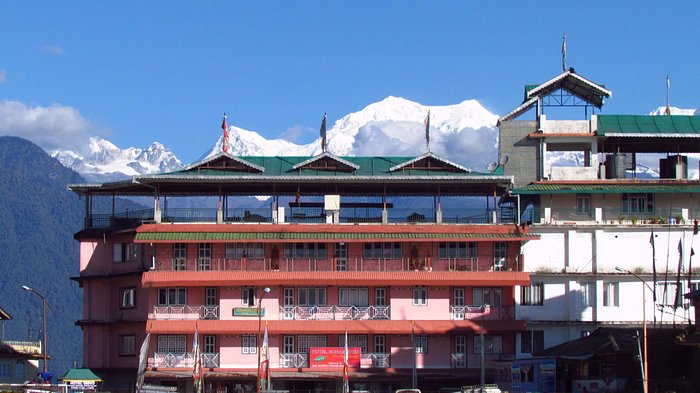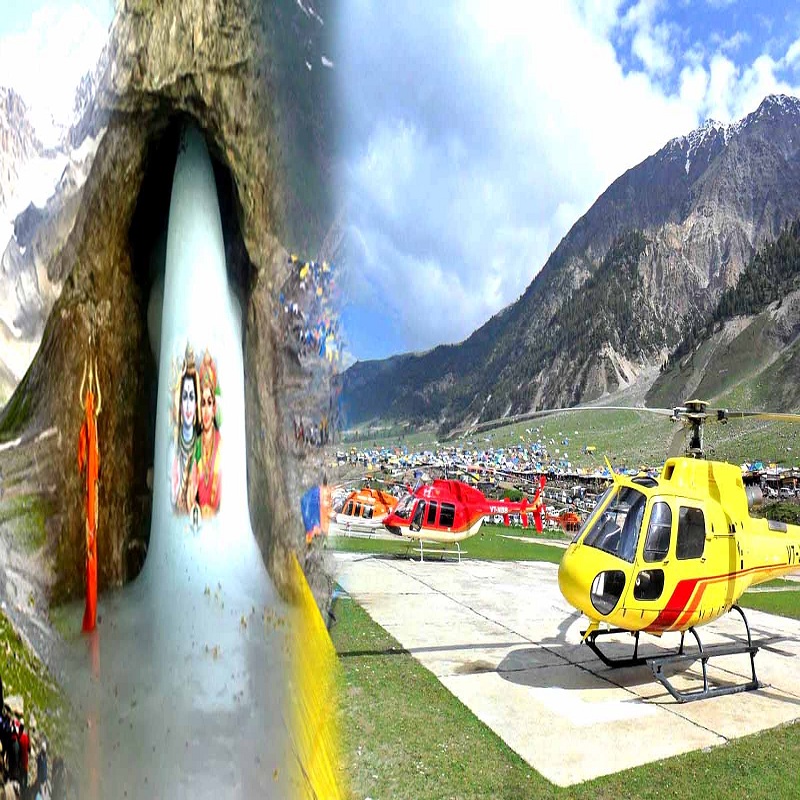
Uzbekistan is a Central Asian nation, known for its rich cultural heritage. It is the region’s cradle of culture for more than two millennia.
In the heart of Central Asia, Uzbekistan boasts a plethora of historic sites, including the ancient Silk Road cities of Samarkand, Bukhara, and Khiva, all steeped in history with stunning Islamic architecture. Its landscape varies from vast desert terrain, including the Kyzylkum Desert, to mountainous areas in the east.
As the world’s sixth-largest cotton producer and rich in natural resources, the country has a growing economy. Travellers to Uzbekistan can experience a tapestry of cultural influences, delightful cuisine, and warm hospitality, making it a unique travel destination. The vibrant bazaars, such as Tashkent’s Chorsu Bazaar, brim with life, offering an authentic glimpse into local traditions and crafts. Uzbekistan invites a journey through time with living traditions in a modernizing society.
Introduction To Uzbekistan’s Enchanting Destinations
Welcome to a journey through Uzbekistan’s enchanting destinations. A land of deep history and stunning landscapes awaits. Visitors are in for a treat with a tapestry of cultural experiences and natural splendors. Let’s embark on an exploration of Uzbekistan’s treasures.
Central Asia’s Cultural Powerhouse
Uzbekistan stands as a beacon of culture in Central Asia. Iconic silk-road cities like Samarkand, Bukhara, and Khiva are just the beginning. The nation’s cultural significance shines through its vivid architecture, bustling bazaars, and rich traditions. Each corner tells a story of ancient empires and great merchants.
Land Of Historic Cities And Natural Wonders
Uzbekistan’s cities are time capsules steeped in history. The country’s landscapes range from the Kyzylkum Desert to the nuratau mountains. These natural wonders contrast with historic sites such as Registan Square and the Arc Fortress. Uzbekistan’s vast terrains invite both adventure and reflection.
- Samarkand – A city of blue domes and mausoleums.
- Bukhara – Home to sacred shrines and ancient quarters.
- Khiva – An open-air museum of Silk Road history.
- Chimgan Mountains – For breathtaking hikes and ski resorts.
- Aral Sea – A poignant reminder of nature’s fragility.
Uzbekistan’s destinations promise an unforgettable journey. They blend time-honored traditions with a captivating natural backdrop. Pack your bags and prepare for the adventure of a lifetime!
Samarkand: Crossroads Of Cultures
Imagine a place where the stories of ancient traders and warriors come alive. Samarkand is that place. For centuries, it stood as a beacon of culture, trade, and knowledge. Here, the Silk Road wove not just goods but also ideas, religion, and art together, creating a rich tapestry of history that still dazzles visitors today. Lets explore the wonders of Samarkand, starting with its iconic heart: Registan Square.
Registan Square’s Architectural Brilliance
Registan Square is the pride of Samarkand. This majestic public square is surrounded by three ornate madrasas, each a masterpiece. The facades are a dance of geometric designs and vivid blue tiles, leaving onlookers in awe. Step inside, and the echo of ancient scholars fills the air.
- Ulugbek Madrasa: A star-gazing site.
- Sherdor Madrasa: Known for its roaring lions.
- Tilla-Kari Madrasa: Its golden mosque shines.
Timurid Legacy In Mausoleums And Mosques
Timur, the Turco-Mongol conqueror, chose Samarkand as his empire’s heart. His legacy lives on in the city’s architecture. The grandeur speaks through the walls and domes of each structure.
| Site | Importance |
|---|---|
| Gur-e-Amir | Timur’s final resting place. |
| Bibi-Khanym Mosque | A monument to love and faith. |
| Shah-i-Zinda | Avenue of mausoleums. |
Each mausoleum in the Shah-i-Zinda complex tells a timeless tale. Intricate mosaics and azure tiles reflect skies and traditions of the past. They stand as eternal homes to royalty, each with its own story.
Bukhara: A Living Museum
Bukhara beckons travelers to its storied streets. This city breathes history. With every step, visitors walk through pages of time. Centuries-old monuments stand as testaments to a rich past. Bukhara isn’t just a city; it’s a tapestry of culture spanning over two millennia.
Magnificent Islamic Architecture
In Bukhara, Islamic art and architecture reach their zenith. The city’s skyline boasts dome-shaped silhouettes and intricately decorated minarets. Walls covered in geometric designs tell stories of artistic mastery. Every archway and tile whispers of ancient craftsmen.
The Kalyan Minaret And Ancient Madrasahs
The Kalyan Minaret stands as a beacon of historical grandeur. Legends say it was so impressive that Genghis Khan spared it during his conquest. Nearby, the madrasahs, or Islamic schools, echo the sound of scholars from long ago. These structures form a timeless campus of learning and spirituality.
- Kalyan Minaret: Also known as the ‘Tower of Death’, it has a history filled with tales.
- Ulugbek Madrasah: A cradle of knowledge from the Timurid dynasty.
- Miri Arab Madrasah: Still a working educational institution, it connects the past to the present.
| Location | Significance | Date Built |
|---|---|---|
| Kalyan Minaret | Survived Mongol Invasion | 12th Century |
| Ulugbek Madrasah | Timurid’s Era Educational Hub | 15th Century |
| Miri Arab Madrasah | Still active teaching institution | 16th Century |
Exploring Khiva: A Fortress City
Nestled in Uzbekistan’s vast deserts, Khiva stands timeless, capturing the essence of medieval Central Asia. This city, encased by towering walls and brimming with centuries-old mosques and madrasahs, offers an unforgettable journey into the past. Walking through its labyrinthine alleys is like stepping onto the set of an ancient historical epic. Prepare to immerse yourself in the charm of Khiva, an experience unlike any other.
Itchan Kala: A Unesco World Heritage Site
At the heart of Khiva lies Itchan Kala, the inner town and a site of exceptional history. With entrancing blue-tiled minarets soaring sky-high and ornate palaces, it is no wonder UNESCO recognizes it. Itchan Kala’s walls enclose a living museum, offering a glimpse into a bygone era of warriors, scholars, and traders.
- Majestic Islam-Hoja Minaret
- Kunya-Ark Citadel
- Juma Mosque with intricate woodwork
Stories Etched In Stone Walls
The formidable stone walls of Khiva whisper tales of ancient civilizations. Each brick tells stories of conquests, culture, and crafts that flourished within these fortified borders. Here, every corner boasts stunning visuals of history’s unyielding grip, urging visitors to listen and learn from the echoes of time.
| Landmark | Story Embodied |
|---|---|
| Pahlavan Mahmud Mausoleum | Legend of a heroic poet & wrestler |
| Tash-Khovli Palace | Tales of Khiva’s royal grandeur |
| Stone Pillars of Juma Mosque | Carved testimonies of skilled artisans |
Tashkent: A Mixture Of Modern And Traditional
The capital city of Uzbekistan, Tashkent, presents a unique tapestry where the present and past coexist. Traditional Uzbek culture merges with the dynamic rhythms of modernity. This city is a treasure trove of experiences for every explorer. From its towering skyscrapers to ancient mosques, Tashkent tells a story of a city in transition.
Cosmopolitan Charms And Soviet Heritage
Tashkent’s skyline tells tales of different eras. Sleek high-rises reflect its forward-looking spirit. Bustling streets reveal the city’s heartbeat. Yet, walk a little further, and the Soviet-era architecture serves as a reminder of the past. The city’s metro, adorned with intricate designs, is a subterranean work of art steeped in history.
- Broad avenues leading to futuristic buildings
- Historical monuments stand with pride
- Museums showcasing Uzbekistan’s rich heritage
Chorsu Bazaar’s Vibrant Marketplace
Chorsu Bazaar lies at the heart of Tashkent’s traditional life. The air is thick with the aroma of spices. The sound of friendly haggling fills the space. Stalls overflow with fresh produce, colorful fabrics, and handcrafted goods. This buzzing marketplace offers a sensory journey like no other, providing a glimpse into the vibrant culture of Uzbekistan.
| Section of the Bazaar | What to Expect |
|---|---|
| Fresh Food | Vegetables, fruits, and butcher blocks |
| Spices and Sweets | Scents and flavors of Uzbek cuisine |
| Crafts and Fabrics | Textiles and souvenirs showcasing Uzbek artistry |
The Fabled Silk Road: Then And Now
Uzbekistan’s heart beats along the ancient pathways of the Silk Road. This legendary network once connected distant markets across continents. Traders shared silk, spices, and stories, linking East and West. Today, Uzbekistan cherishes its Silk Road legacy, while shaping a modern identity.
Historical Trade Routes
The Silk Road spread far beyond a single path. It branched like a tree’s roots, reaching multiple lands. Key cities in Uzbekistan, like Samarkand, became bustling trade hubs. Explorers and merchants traversed these routes, forging cultural exchanges over many centuries.
- Samarkand – Jewel of the Silk Road
- Bukhara – A nexus for commerce and learning
- Khiva – An ancient wellspring of art and architecture
Silk Road’s Influence On Modern Uzbekistan
Modern Uzbekistan continues to evolve from its Silk Road roots. Its cities reflect a mix of ancient customs and progressive vision. Trade remains vital, with Uzbekistan reconnecting with global partners. The Silk Road legacy thrives, from timeless handcrafted wares to contemporary cultural festivals.
| Area of Influence | Examples |
|---|---|
| Cultural |
|
| Economic |
|
| Social |
|
Nature’s Splendor: Uzbekistan’s Diverse Landscapes
Uzbekistan, a jewel in Central Asia, boasts breathtaking landscapes. Each corner tells a unique story of beauty and contrast. From vast deserts to lush mountains, nature lovers discover a tapestry of colors and experiences. Explore Uzbekistan, where every view is a painting brought to life.
Aral Sea’s Heartbreaking Tale
Once one of the world’s largest lakes, the Aral Sea is now a symbol of ecological tragedy. Desert sands have replaced what was a thriving water body. The remnants of this vanishing lake spark conversations on climate and human impact. Still, the Aral Sea’s story is a must-discern chapter in Uzbekistan’s natural saga.
The Nuratau Mountains’ Unspoiled Beauty
The Nuratau Mountains provide a stark contrast to the Aral Sea’s narratives. These lush highlands shelter a rich array of flora and fauna. Endangered species find sanctuary in this untouched paradise. The Nurataus invite adventurers and tranquility seekers alike for an unrivaled experience. Their pristine trails lead to vistas unseen and memories unforgettable.
This Central Asian gem reveals its splendor through ever-changing landscapes. Uzbekistan’s natural world is a canvas that reflects both beauty and cautionary tales.
Uzbek Cuisine: A Taste Of The Silk Road
Welcome to the delectable realm of Uzbek Cuisine: A Taste of the Silk Road. Nestled in the heart of Central Asia, Uzbekistan’s culinary traditions reflect a history enriched by the Silk Road’s constant flow of spices, techniques, and cultural exchanges. The Uzbek table is a mosaic of flavors that bring the ancient trade routes to your palate. Let’s delve into the savory and the sweet, the robust and the delicate, of this nation’s storied cuisine.
Savory Plov And Sumptuous Kebabs
Plov, the crown jewel of Uzbek dishes, tells a tale with each aromatic spoonful. This hearty meal combines tender meat, fluffy rice, and a variety of vegetables, often cooked in a single cauldron to mingle the flavors to perfection. Plov varies by region, but its comforting essence brings Uzbekistan’s diverse regions together on one plate.
- Rice: The base of every plov dish, often long-grained and golden.
- Meat: Typically lamb or beef, providing rich depth.
- Carrots and Onions: Added for sweetness and texture.
- Spices: A blend that may include cumin, coriander, and more.
The kebab offers a symphony of skewered meats, usually lamb or beef, each piece narrating a piece of pastoral life in Uzbekistan. Grilled over open flames, kebabs embody the simplicity and robustness of Uzbek cooking.
Melons To Samarkand: Fruits Of The Oasis
The fruit markets of Uzbekistan are an oasis of taste and color, with Samarkand being a famed historical center. Melons are particularly revered, sweet to the core and bursting with juice, each variety offers a unique flavor.
| Fruit | Description | Season |
|---|---|---|
| Melon | Sweet and fragrant | Summer |
| Grapes | Juicy and diverse | Late Summer |
| Cherries | Tart and plump | Spring |
Apart from melons, Uzbekistan’s fertile valleys yield lush grapes, peaches, apricots, and plums. These fruits not only grace the local markets but also find their way into the country’s assorted jams and desserts. They embody the sweetness of the Uzbek sun and the ingenuity of its people.
Cultural Festivals And Traditions
The heart of Central Asia beats to the rhythm of Uzbekistan’s rich culture. This land, steeped in history, comes alive through its festive traditions. Locals and tourists alike are drawn to the vibrant celebrations that make Uzbekistan truly unique.
Navruz Celebration
Welcome the spring with Navruz, an ancient festival marking the new year. It’s a time of renewal and joy.
- Families prepare traditional dishes like sumalak.
- Streets fill with laughter, music, and dance performances.
- People wear colorful, hand-crafted outfits, sharing well-wishes.
Rich Tapestry Of Music And Dance
In Uzbekistan, music and dance are not just art; they are the soul of the nation. Vibrant costumes and melodic instruments tell stories of the past.
| Musical Tradition | Description |
|---|---|
| Shashmaqom | A genre that intertwines poetry with melody. |
| Dutar | A traditional two-stringed instrument, central to Uzbek music. |
| Katta Ashula | A powerful vocal art, performed during festive events. |
Live performances depict historical events, legends, and love stories.
Practical Tips For Travelers
Welcome to a treasure trove of tips for your journey to Uzbekistan. This land of ancient cities, beautiful landscapes, and rich traditions awaits. Here’s how to make the most of your trip.
Best Time To Visit
Spring (March to May) and autumn (September to November) charm travelers with ideal weather. During these months, temperatures are mild, perfect for exploring cities like Samarkand and Bukhara. Outdoor activities like hiking in the Chimgan Mountains are also more comfortable.
- Nauryz in March: Experience Uzbek new year.
- Silk and Spices Festival in May: Bukhara comes alive with colors.
Navigating Local Customs And Etiquette
Respect and understanding go a long way in Uzbekistan. Here are key pointers:
| Greetings | Handshakes for men, nod for women. |
|---|---|
| Dress Code | Modest attire, especially at religious sites. |
| Visiting Homes | Remove shoes, bring a small gift. |
Bargain at markets, but do so politely. Knowledge of basic Russian phrases can help. Always ask before taking photos of locals.
Frequently Asked Questions On Uzbekistan
Is It Safe To Travel To Uzbekistan Now?
As of my knowledge cutoff in March 2023, Uzbekistan is generally safe for travelers. Always check current travel advisories and observe local health and safety guidelines.
Is Uzbekistan Is A Part Of Russia?
Uzbekistan is not a part of Russia; it is an independent country in Central Asia since its independence in 1991.
Why Is Uzbekistan Famous?
Uzbekistan is renowned for its rich Silk Road history, stunning Islamic architecture, and cultural cities like Samarkand, Bukhara, and Khiva. Traditional crafts, vibrant bazaars, and distinct cuisine also enhance its fame.
Is Uzbekistan A Cheap Country?
Yes, Uzbekistan is generally considered affordable for travelers, offering low-cost accommodations, food, and public transportation.
Conclusion
As our journey through Uzbekistan comes to a close, it’s clear that this is a land of untold stories, woven into every market and minaret. With its rich history, vibrant culture, and warm hospitality, Uzbekistan beckons travelers seeking a path less traveled.
To truly experience its wonders, one must walk its ancient streets, taste its unique flavors, and witness the sun setting over its golden cities. Don’t just take our word for it, come and see for yourself—the heart of Central Asia awaits.




